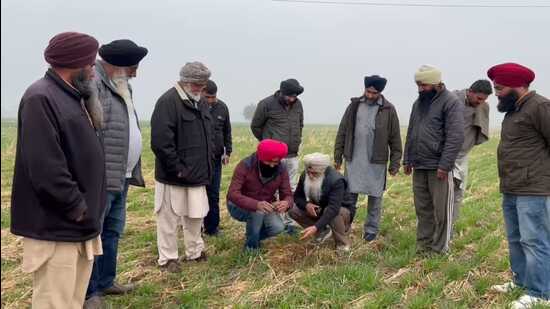Punjab agriculture department warns farmers of yellow rust attack on wheat crop
Yellow rust, a fungal disease, causes the crop’s leaves to turn yellow, halting photosynthesis and resulting in a significant drop in yield
After the recent attack of pink stem borer on wheat crops, the Punjab agriculture department has issued a new warning to farmers regarding the potential threat of yellow rust disease in wheat fields.

Yellow rust, a fungal disease, causes the crop’s leaves to turn yellow, halting photosynthesis and resulting in a significant drop in yield.
Karanjit Singh Gill, chief agriculture officer of Moga, along with his team, recently visited several villages in the Dharamkot sub-division in the district to inspect wheat crops sown without burning paddy stubble.
During their visit, the team informed farmers about the yellow rust disease and its impact on wheat crops.
Gill urged farmers to regularly monitor their fields for symptoms of yellow rust and report any findings to the department. The department is working to raise awareness about the yellow rust disease and provide support to farmers across the southern Malwa region, including Moga and Faridkot.
The department has advised them to use recommended fungicides at appropriate doses to prevent the disease from spreading.
Earlier this week, agriculture department officials had said that with the drop in temperature, the impact of pink stem borer had lessened. The pest had caused significant damage to crops, especially in areas where farmers had avoided burning paddy stubble. However, yellow rust disease now presents a fresh challenge for farmers.
Agriculture officer Karamjit Singh Brar highlighted decreasing water levels in the Malwa region. “Farmers should prioritise water conservation by opting for alternative crops like moong, maize, mustard, gram, and sundew, instead of wheat and paddy, which consume more water,” he said.
The team also appealed to farmers to avoid using excessive pesticides and fertilisers without consulting agricultural experts.






